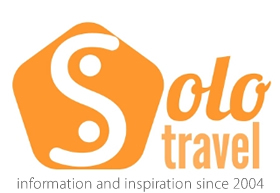| ARTICLES - COUNTRY GUIDES - ACTIVITIES - DIRECTORY |
The Medinas of Morocco - A Backpackers Perspective of MoroccoThe enduring image I am left with is the medinas of Morocco. Each medina is a city unto itself, self contained behind walls of stone covered in a red or brown plaster and standing at least 20 feet high. Inside there are countless small streets, lanes and alleys and buildings 3 storeys high looming over the lanes and passageways where people live. But above all, there are people- hundreds, thousands of people shouting and talking, begging and selling, eatingat tiny food stands or drinking mint tea in 4or 5 table cafis. Each town has its own distinct medina with a totally different character. In Rabat, the capital of Morocco and a city of over 2 million people, the medina is right off the 2nd principal street ( Hassan 11) and so is adjacent to the town, or what the Moroccans call "la ville nouvelle". We entered from the east through the main gateway which is about 400 years old and this road is immediately bisected by another road running north-south. Each of these roads is about 10 people standing shoulder to sdoulder wideand there are little stalls and kiosques on each side and on the north-south street there are vendors in the middle as well. Many of the salesmen are shouting out what they have to offer as well as the price to create a constant barrage of sound. There are restaurants, men's clothing, fruit stands, butchers, jewelry stores, shoes, lingerie, knives and axes, cigarettes, general stores-in short, everything. All in public, with people pushing and shoving; even the women dressed in hijabs will give you the occasional elbow. You have to move with the flow of the crowd and pull off into a little store if you want to buy something. We ate in 3 ot the tiny retaurants in the medina, each one only had half a dozen tables and thenapkins are just cut up paper place mats. The food was very good though. The Rabat medina is relatively small, maybe half a kilometre long and 1 kilometre wide and I don't know how many thousands of people live inside, but surely there are many. There are almost no windows on the side streets, but all the roofs are flat, so all the laundry is put out there to dry. After Rabat we went to Meknes where we saw the jewellers and embroiderers at work. They hand roll the yarn onto individual spools. Boys hold one end of the yarn, sometimes as much as 50 metres away around a bend in the road, while the craftsman winds the yard onto the spool. He will then stack it in his little store alongside dozens of others, all of different colours. The embroiderers sit cross legged in tiny compartments tith the jallabas on their laps as they sew by hand the intricate stitching which turns into incredibly beautiful designs. Their hands move so fast that it is hard to follow each movement, but you can see how the design grows as they work without stopping. The Fes medina is separated from the ville nouvelle by the Royal Palace and some open ground. Inside the medina is something special. First of all it is huge, easily 2 kilometres long by one and a half wide; then it is built on hills so there is little plat space and finallf it was built in the 1300s and has, apparently, had some renovations but very few modifications since then. The main streets are paved with cobble stones, with a side gutter to allow garbaga and sludge to drain away. The buildings are 3 storeys high as usual, with the ground floor being taken up with little stores and the 2 top floors for people to live. The width of the main streets is about 10 feet and in some places large wooden beams have been jammed between the buildings to stop them falling into the street. We had tea in a tiny cafi that was about 15 feet deep and 8 feet wide, but it had a TV. The men inside were so friendly that they changed the channel on the TV from Arabic to French so that we would feel included (and I'm quite sure that none of them spoke French). Mules, donkeys and horses carry most of the goods in the Fes medina and you keep having to jump out of the way as another donkey walks by laden with oranges or propane tanks or water. Everybody is selling. It is hard to walk more than a few steps without a carpet seller, food seller small boy offerinf to show you around or jewelry seller enticing you with fine looking merchandise. People showed us great kindness and generosity, chasing away small boys who were bothering us and giving us a ride back into town when we couldn't get a taxi. It is an incredible experience. At the same time an assault on, yet stimulation of, the senses; claustrophobic yet full of life and energy, life at its richest and rawest. We visited the Fes medina twice and only skimmed the surface of what it has to offer. People have lived like this for hundreds of years, with a mosque (pronounced moskay) every few hundred metres and even more frequent water fountains and public baths because life here is a public event.
> Home Page |


